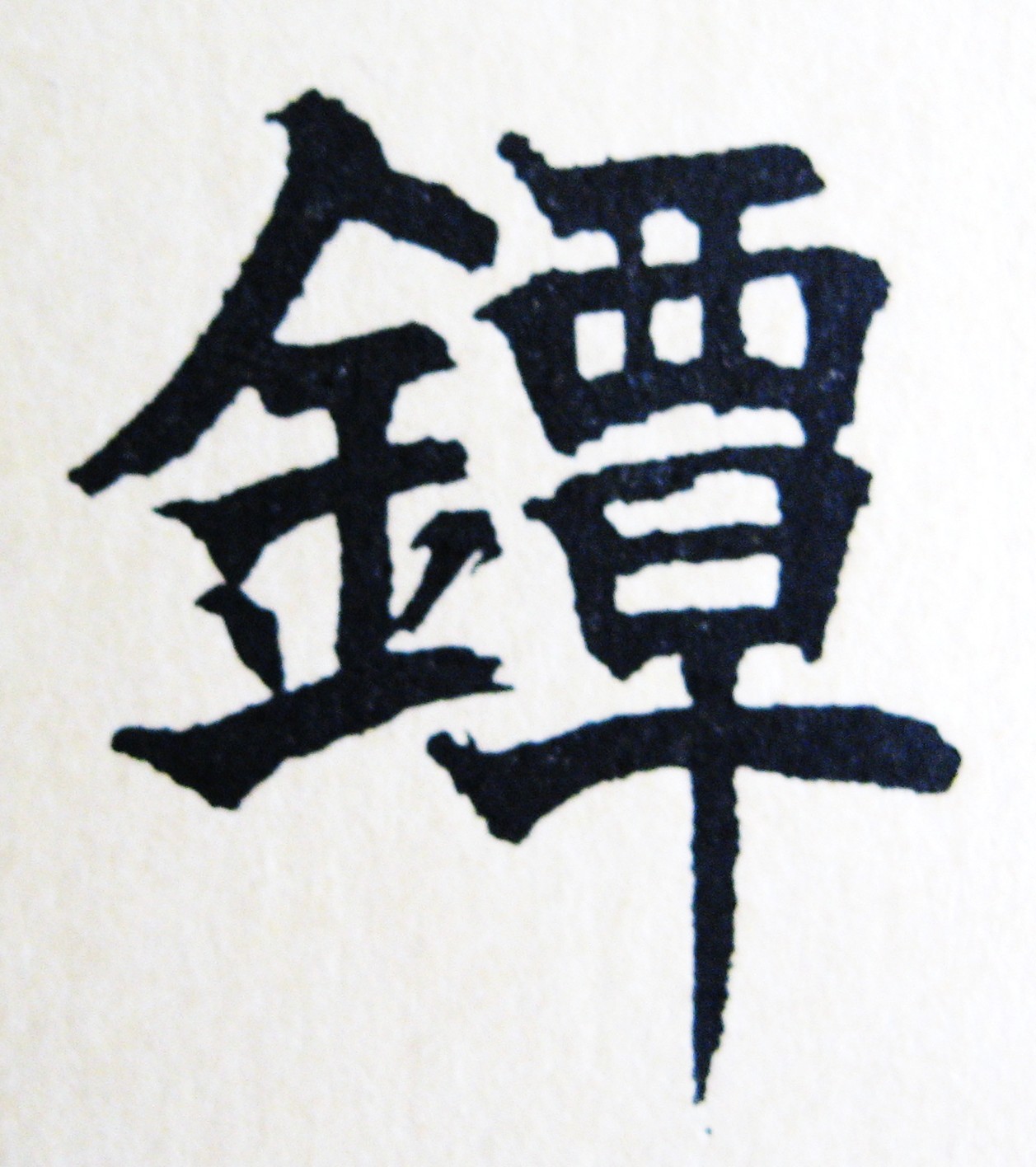|
'KAGA Jo FUJIWARA TOSHISADA'
|
 |
|
'KAGA Jo FUJIWARA TOSHISADA'
|
 |
| PROVENANCE: Robert E. Haynes William F. Shepherd |
Reference Only |
|
"Round iron plate of goishigata shape. The surface with a very fine carved line Amida Yasuri pattern, over all, on both sides. With two thin rectangular openings, that might be sutra cases. The nakago-ana has copper insertions in the style of the Suruga family school, but can also be found in the work of other artists. The face is signed: 'Kaga jo Fujiwara Toshisada'. See H 10544.0. He dated one piece Sept. 1658. This example of his work is in the style of the Toda Hikoemon (see H 01261.0) school of Owari Prov. The first members of that school were active when this artist was working. Why he would choose to work in their style is not known, but it is most interesting, for it shows again that if most unsigned tsuba, were signed, that we would be very surprised at the names we would find on them. This is an important study piece and needs more research." (R.E. Haynes) Ref. Toko Kinko Jiten pg. 609 lower 5 8.10cm x 0.35cm thick tapering to edge. Amida Yasuri is symbolic of Buddha's Halo. The light of the Halo symbolises truth, wisdom, and purity of heart. In this example, the sutra cases are representing two of the discourses attributed to Buddha. Read (below) about TENDAI-SHU, a Japanese school of Mahayana Buddhism favored by the Fujiwara Clan. |
 |
|
From a practitioner of Buddhism: "I believe the following passage perfectly compliments your 'Kaga jo Fujiwara Toshisada' tsuba." (James) "The union of the two truths, the dharmadhatu, the great equality of all things, does not, by its very nature, involve the rejection of samsara. Neither does it abide in the extreme of peace, for it is endowed with enlightened activities. Dharmadhatu is inseparable from great compassion, free of all references. How could someone fall into the extreme of peace, if he or she realized the great equality of all things? If such a thing were possible, the Aryas of the Mahayana and even those who actualize the luminosity of the Mantrayana would be caught in the extreme position of a one-sided nirvana." - Introduction to the Middle Way, Chandrakirti's Madhyamakavatara with Commentary by Ju Mipham, Shambala Publications, page 313 |
 |
 |
  |
|
TENDAI (Tendai-shu) BUDDHISM Shingon Buddhism is one of the mainstream major schools of Japanese Buddhism that started in the 3rd to 4th century AD. Shingon enjoyed immense popularity during the Heian Period, particularly among the Heian nobility, and contributed greatly to the art and literature of the time, as well as influencing other communities, such as the TENDAI School on Mount Hiei. |
|
A Collaboration of Robert E. Haynes and Elliott D. Long |
|
|
| Return To Tsuba
Collective Robert Haynes Articles -- Tutorial Email to Shibui Swords |